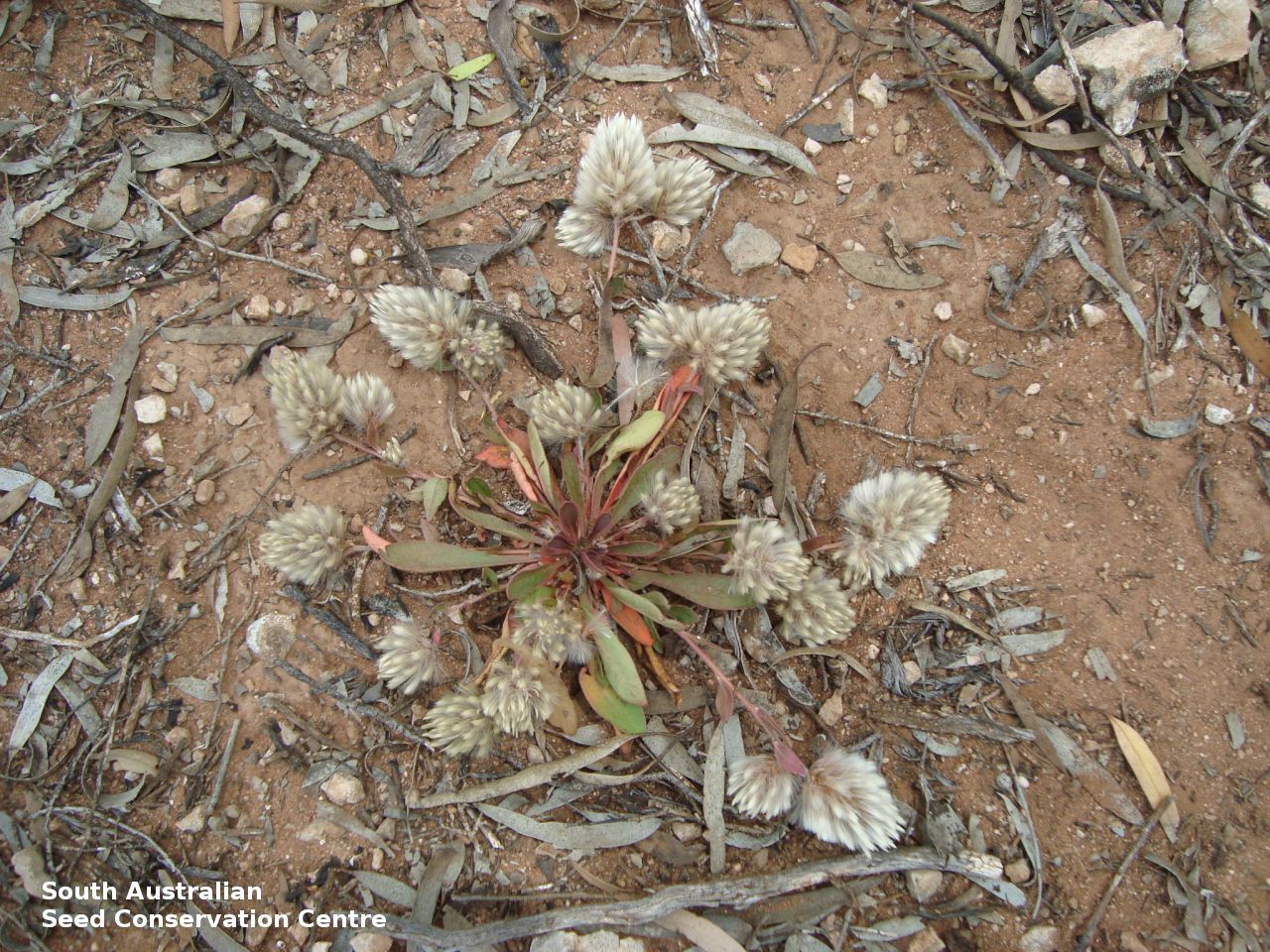
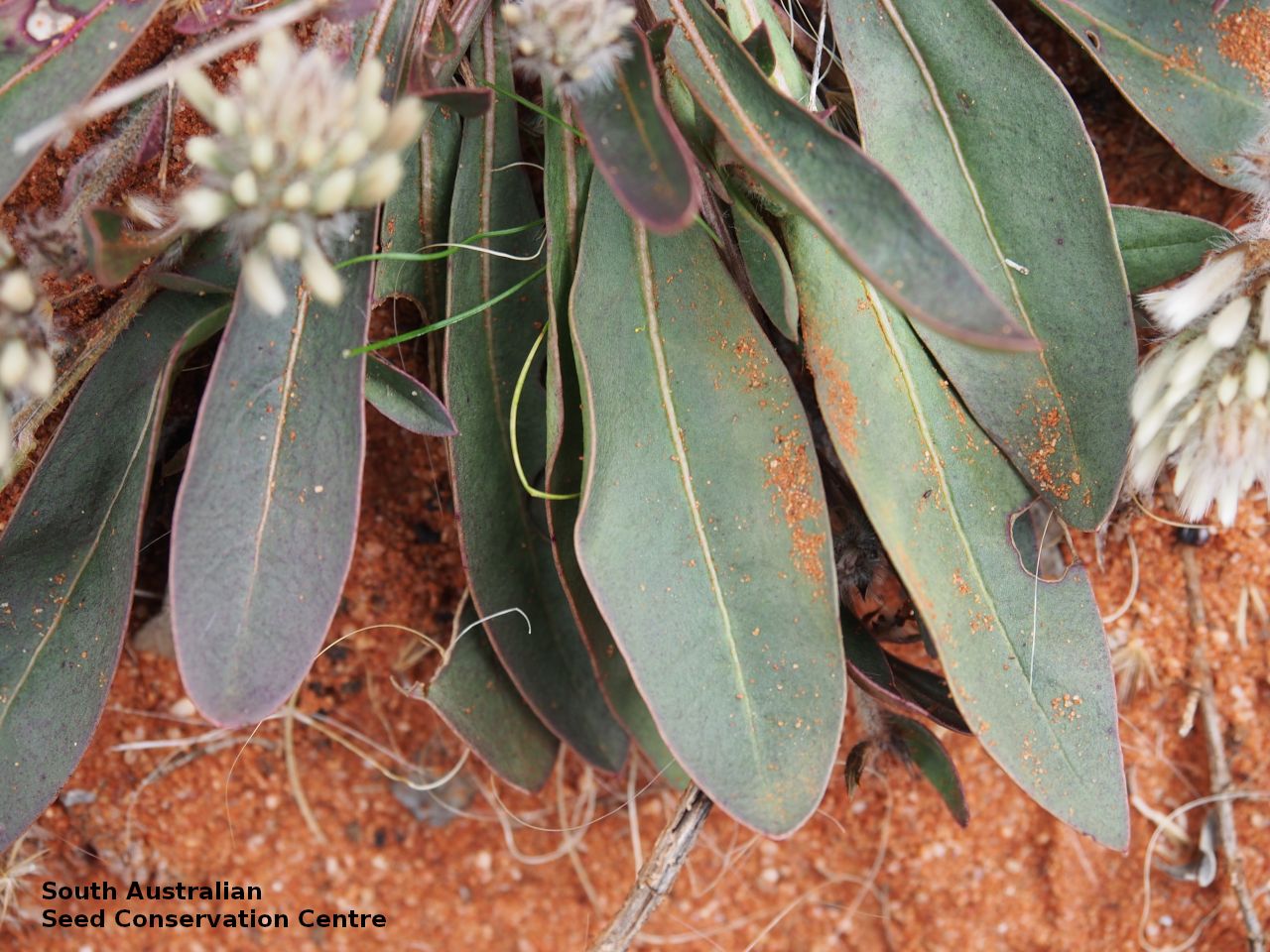
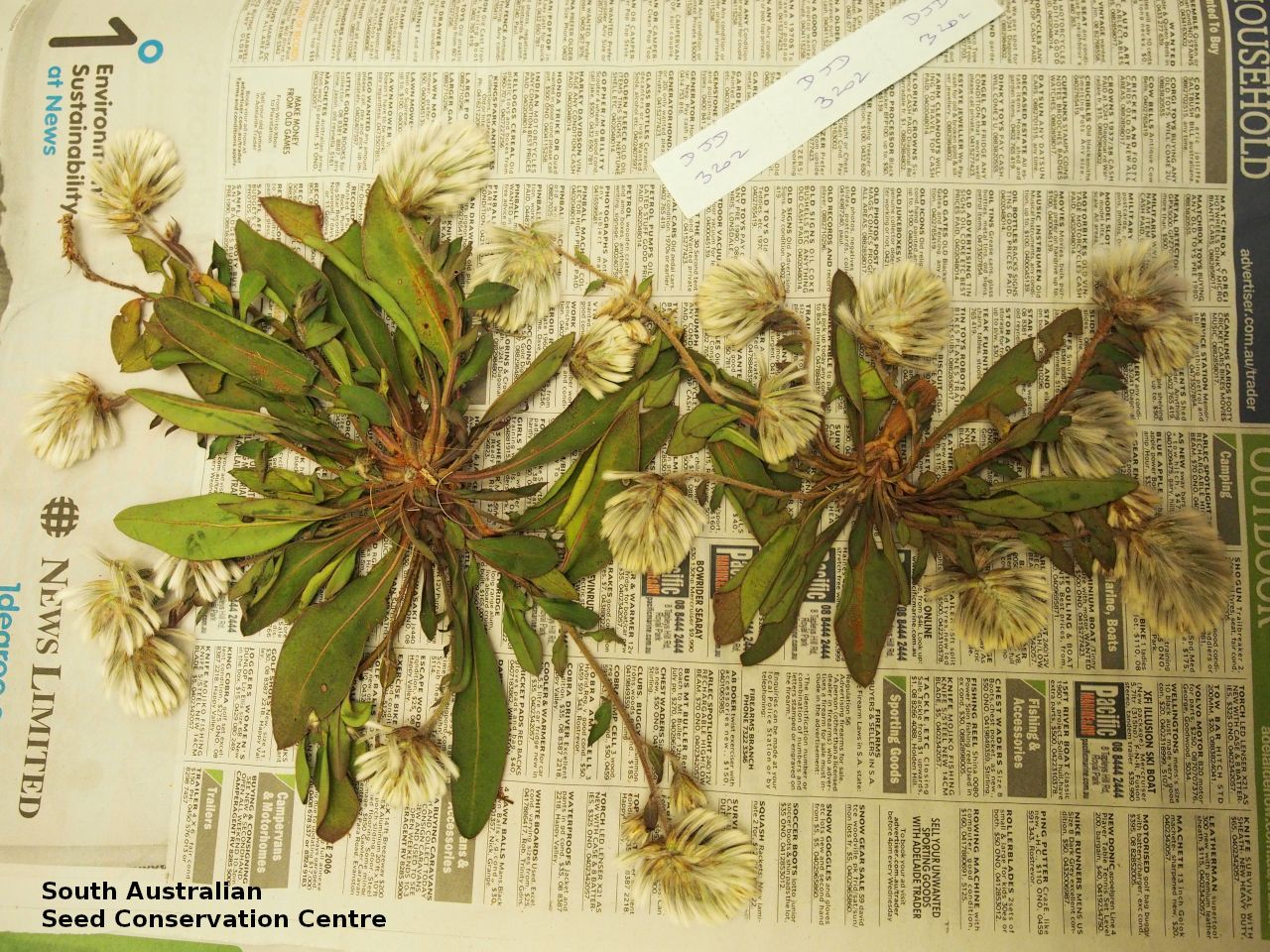
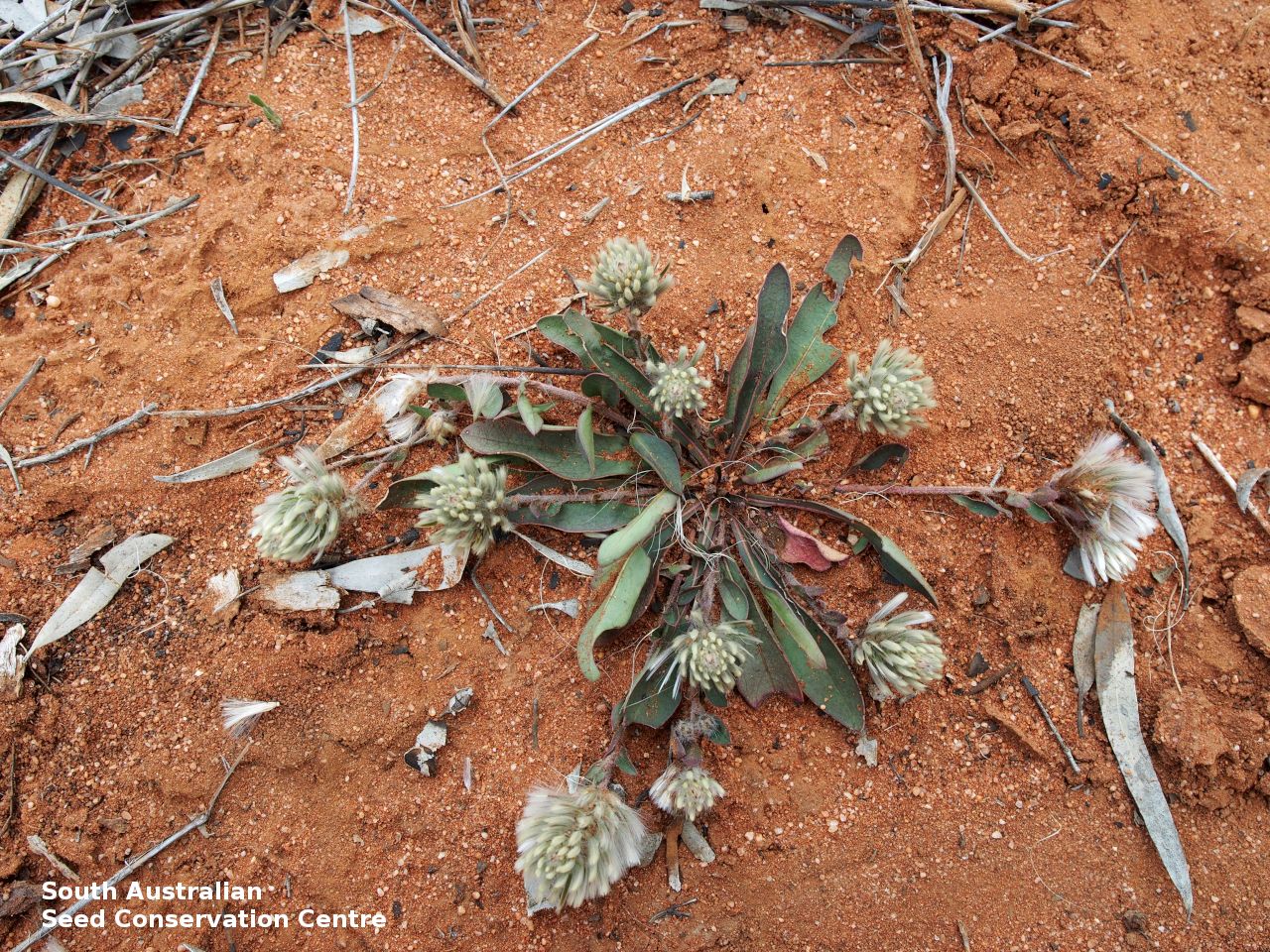
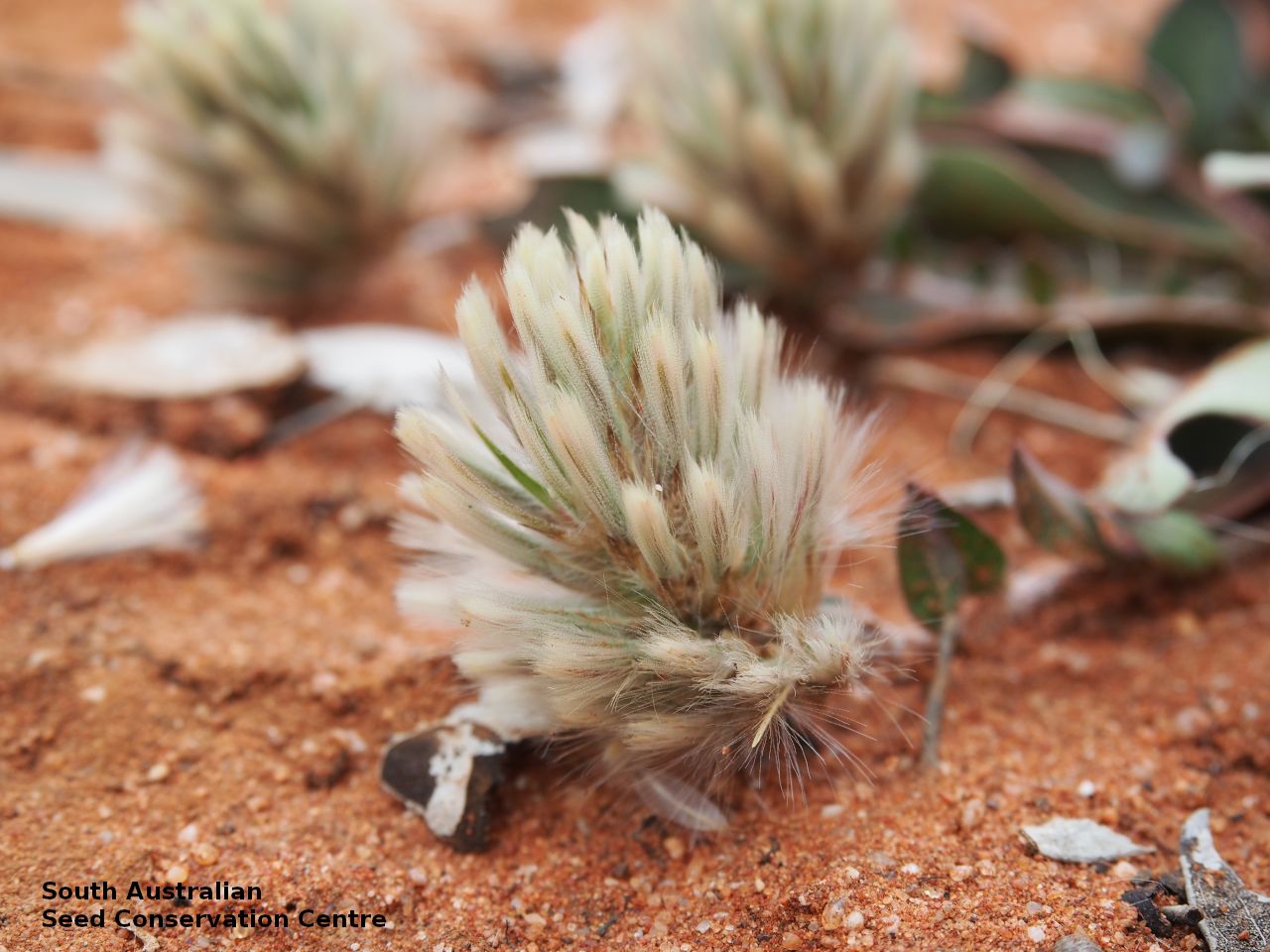
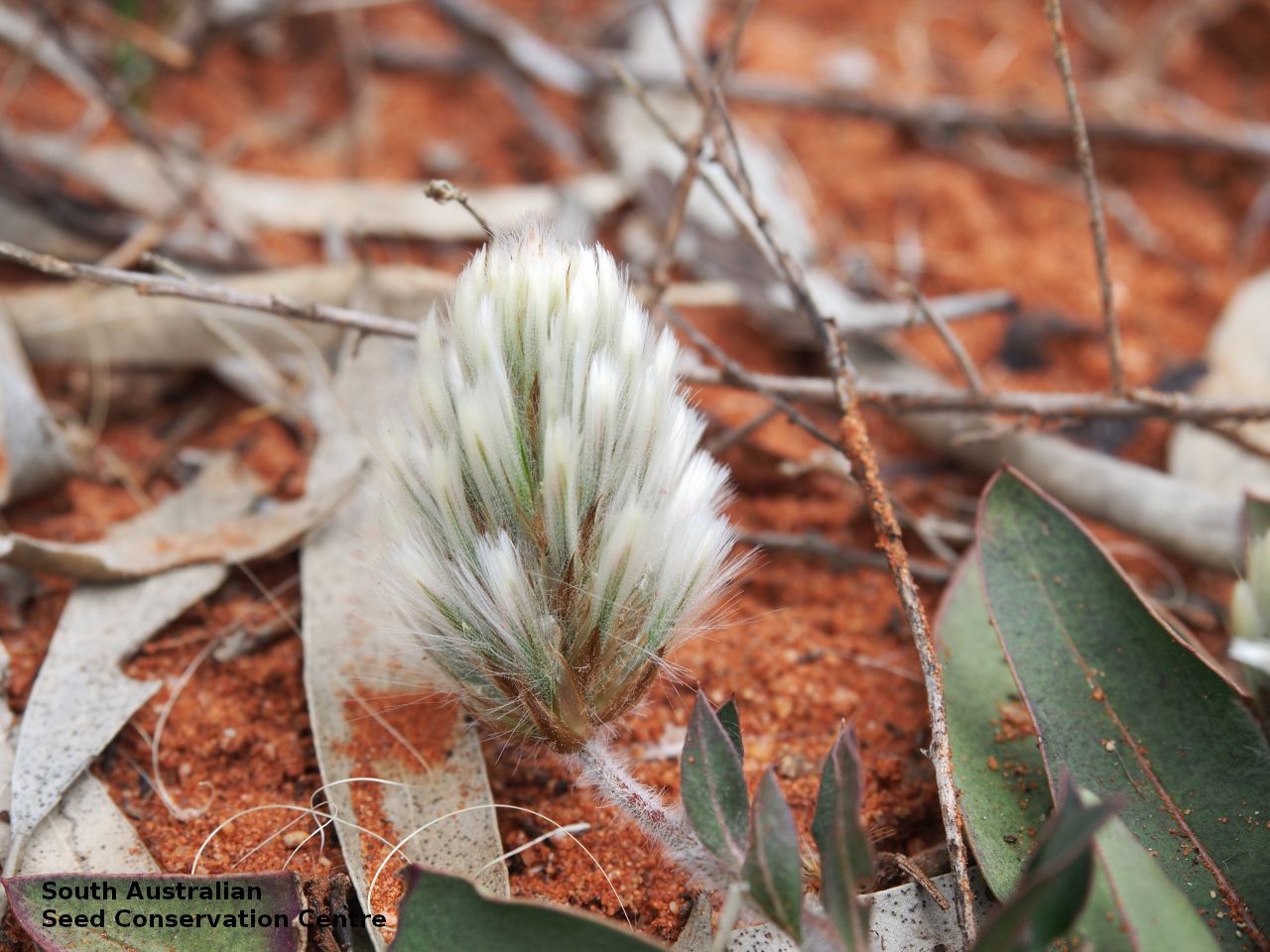
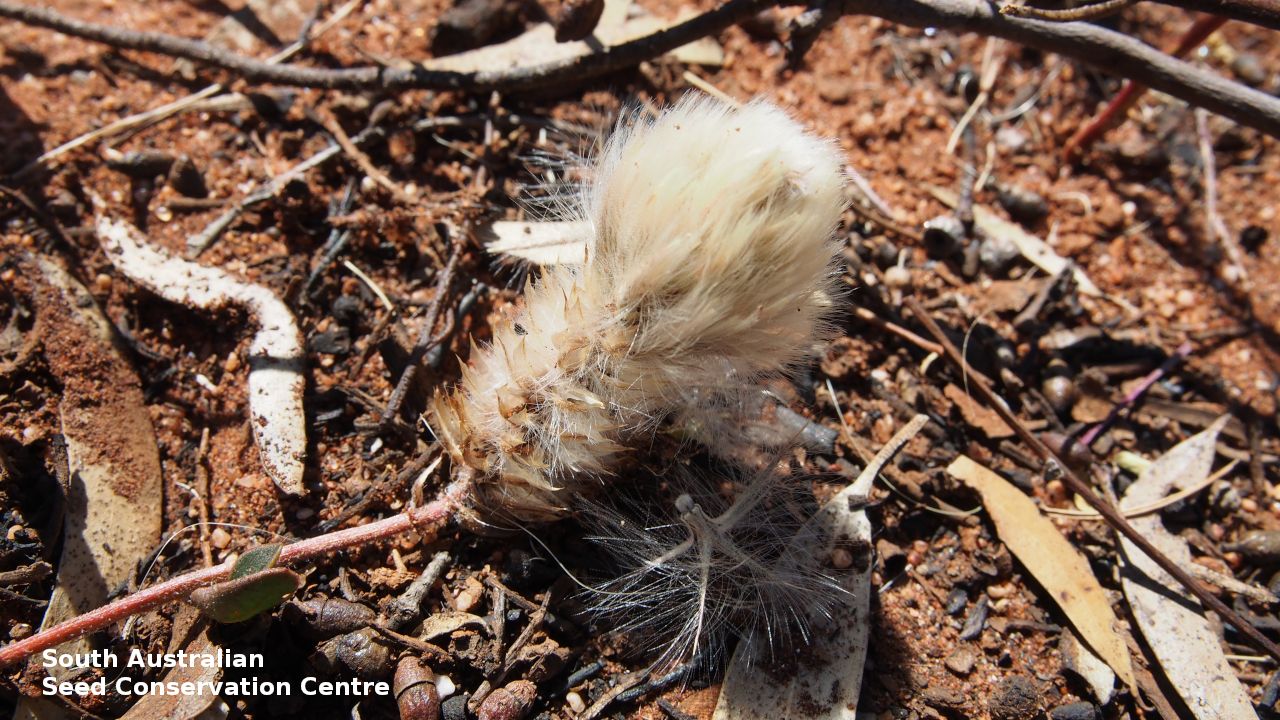
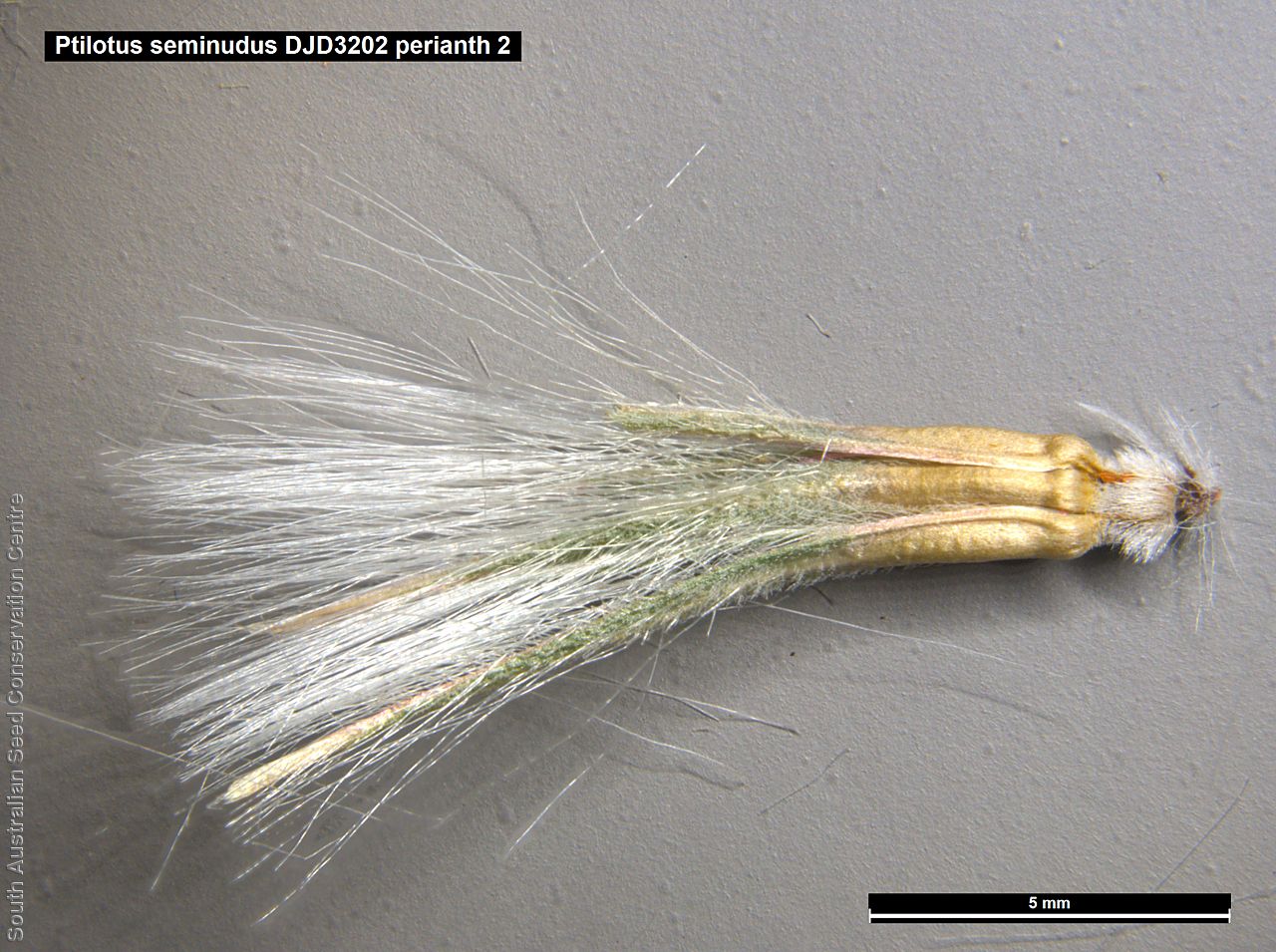
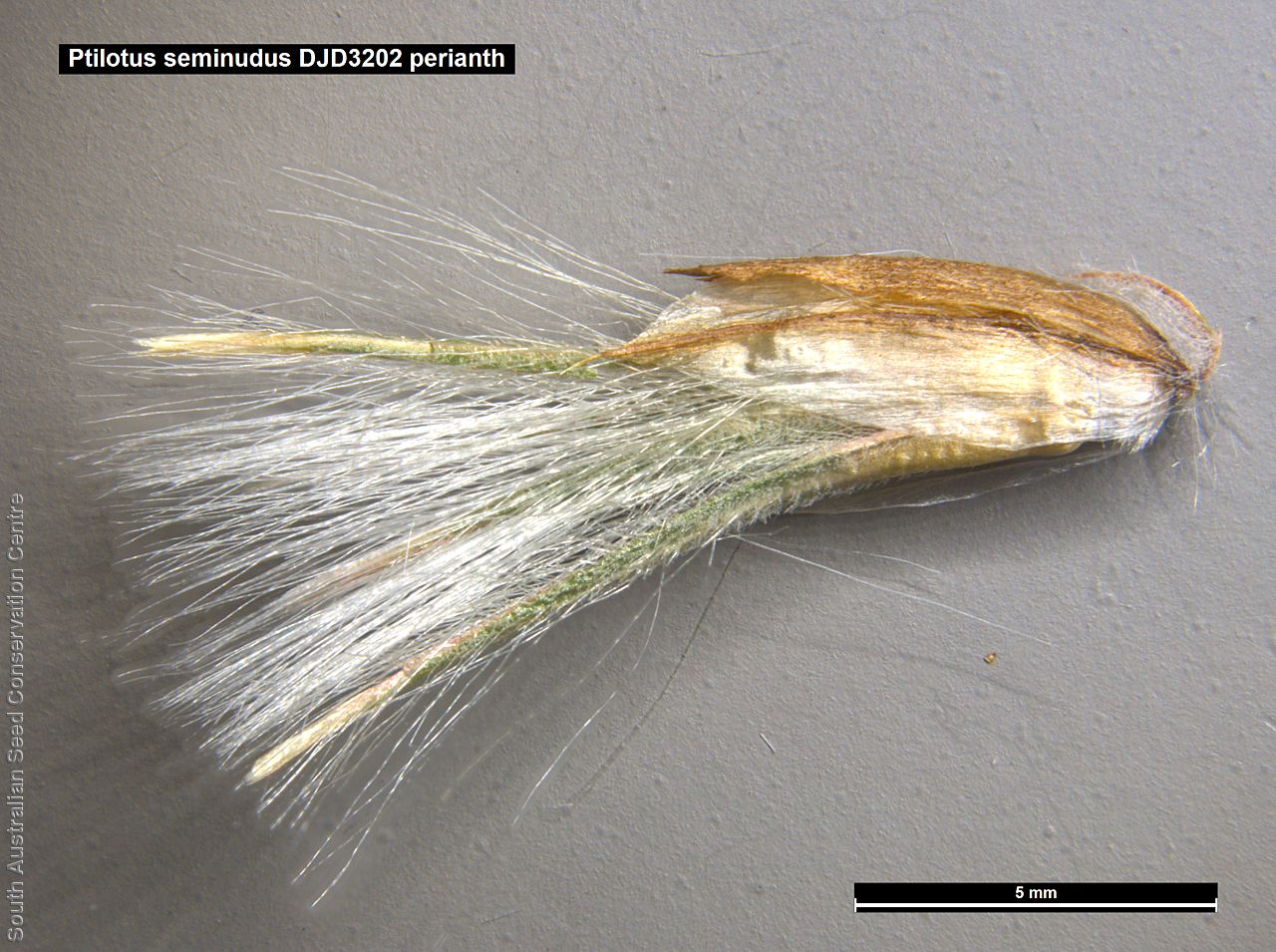
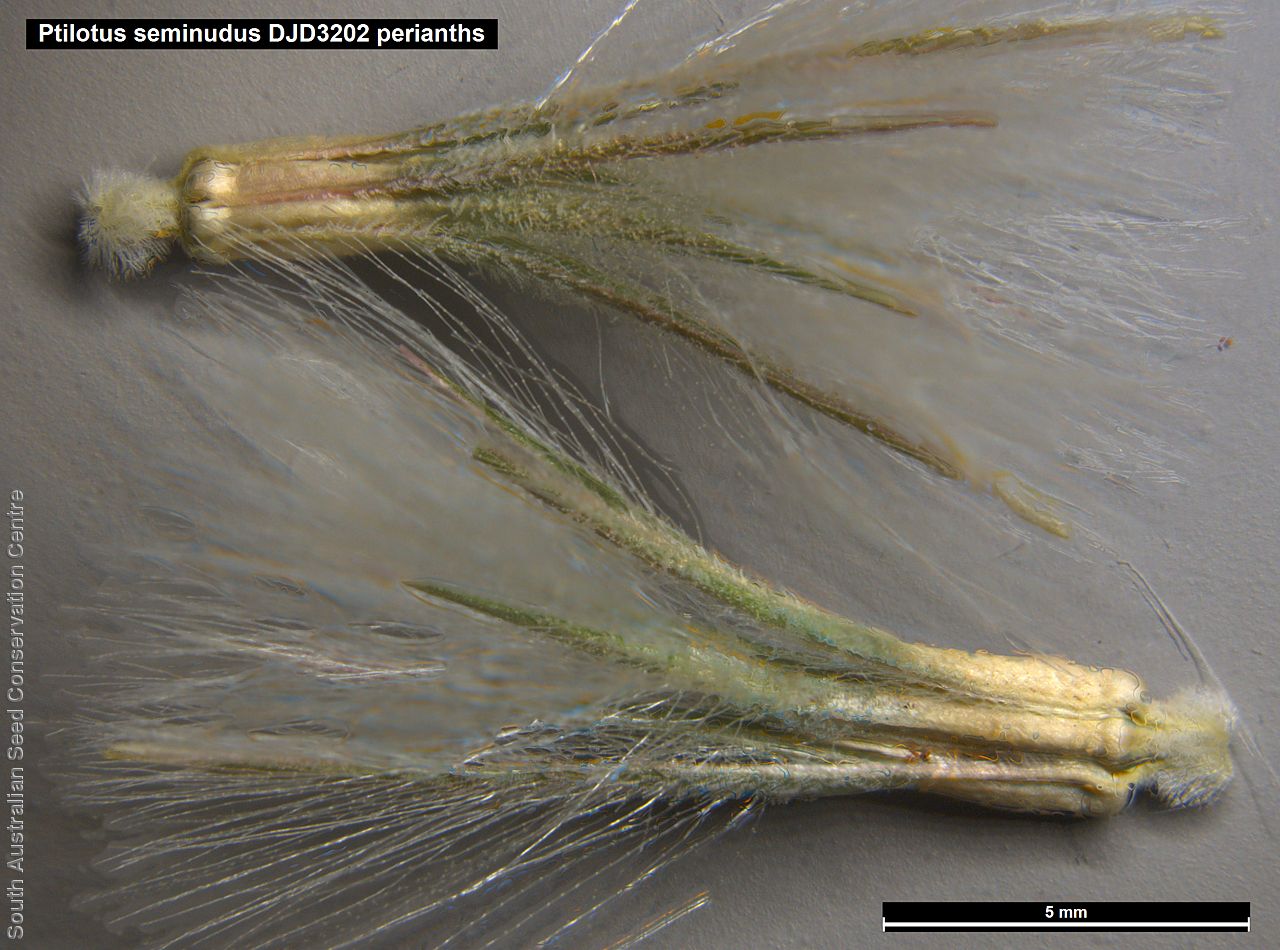

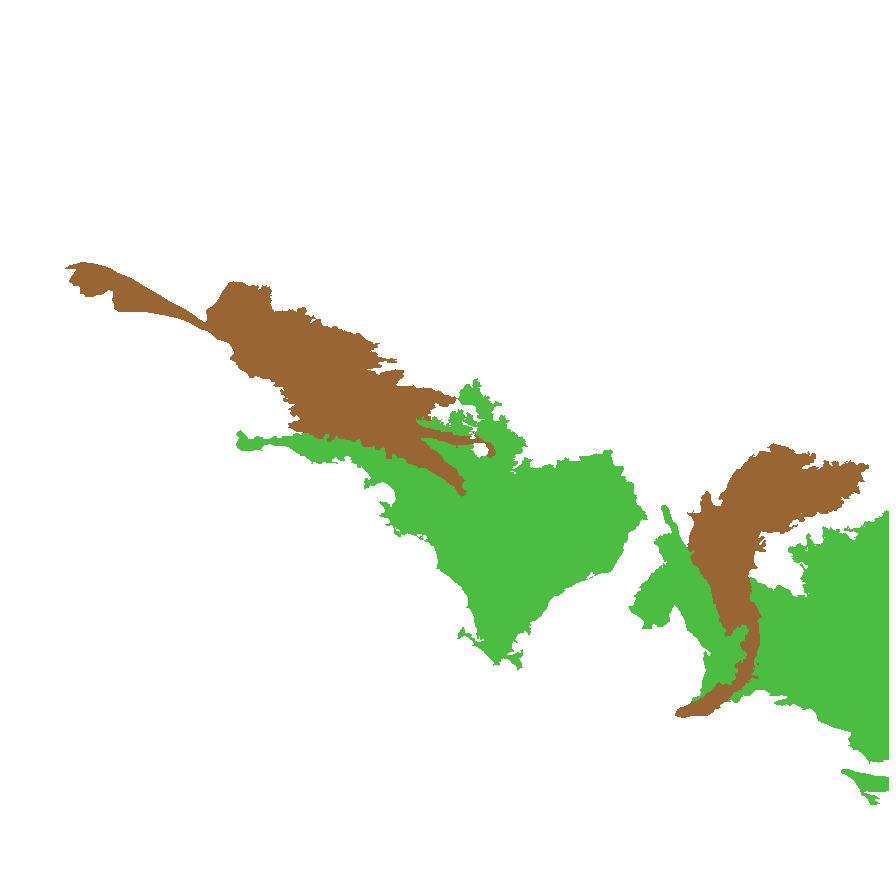
Botanical art
Prior names
Trichinium seminudum
Common names
Rabbit-tails
Etymology
Ptilotus from the Greek 'ptilotos' meaning feathered or winged; referring to the hairy flowers. Seminudus from the Latin 'semi' meaning half and 'nudus' meaning naked; possibly referring to the flowers.
Distribution and status
Found on Eyre Peninsula, northern Mount Lofty Ranges and along the Murray River in South Australia, growing on red-brown silty or sandy loams, on low dunes and between ridges, in mallee scrub associations. Also found in Western Australia, New South Wales and Victoria. Native. Common in South Australia. Rare in Western Australia. Uncommon in the other states.
Herbarium regions: Eyre Peninsula, Northern Lofty, Murray, Yorke Peninsula
AVH map: SA distribution map (external link)
Plant description
Prostrate or semi-prostrate herbs to 10 cm high and 30 cm wide with hairy stems, glabrescent with age. Basal leaves obovate or elliptic, glabrous, to 90 mm long and 20 mm wide, bases long-attenuate, shorter than upper expanded portion. Stem leaves ovate, obovate or elliptic, sparsely hairy, to 20 mm long and 8 mm wide, bases cuneate or attenuate. flower-spikes terminal or pseudo-terminal, globose or ovoid, to 5 cm long, with 50 green, grey or white flowers. Bract to 9 mm long, bracteoles to 10 mm long, both with apices aristate, perianth to 17 mm long, green, grey or white, tepals with lower third glabrous, except some verticillate hairs to 0.5 mm long marginally, remainder with moderately dense hairs to 10 mm long, hairs exceeding apices. Flowering between August and December. Fruits are white to pale brown ovoid head containing numerous long papery and hairy fruits, each containing one seed. Seed embryo type is peripheral.
Seed collection and propagation
Collect seeds between December and February. Be very careful when collecting this species as the fruits contain fine hairs that may cause an allergic reaction for some people. Collect the fruit heads when dried to a pale straw colour. Each fruit should come off the head easily when fingers are rubbed up the stem. Collect more fruits than required as not all fruits will have a viable seed. Be very careful when cleaning this species as the fruits contain fine hairs that may cause an allergic reaction for some people. To clean, rub the fruit heads gently to dislodge the seed at the base of each fruit. Use a sieve to separate the unwanted material. Store the seeds with a desiccant such as dried silica beads or dry rice, in an air tight container in a cool and dry place. Seeds are non-dormant, viable seed should germinate readily.
| Location | No. of seeds (weight grams) | Number of plants | Date collected | Collection number Collection location | Date stored | % Viability | Storage temperature |
|---|---|---|---|---|---|---|---|
| MSB | 1,330 (3.61 g) | 40-50 | 16-Oct-2007 | DJD905 Eyre Peninsula | 70% |
Number of plants: This is the number of plants from which the seeds were collected.
Collection location: The Herbarium of South Australia's region name.
% Viability: Percentage of filled healthy seeds determined by a cut test or x-ray.